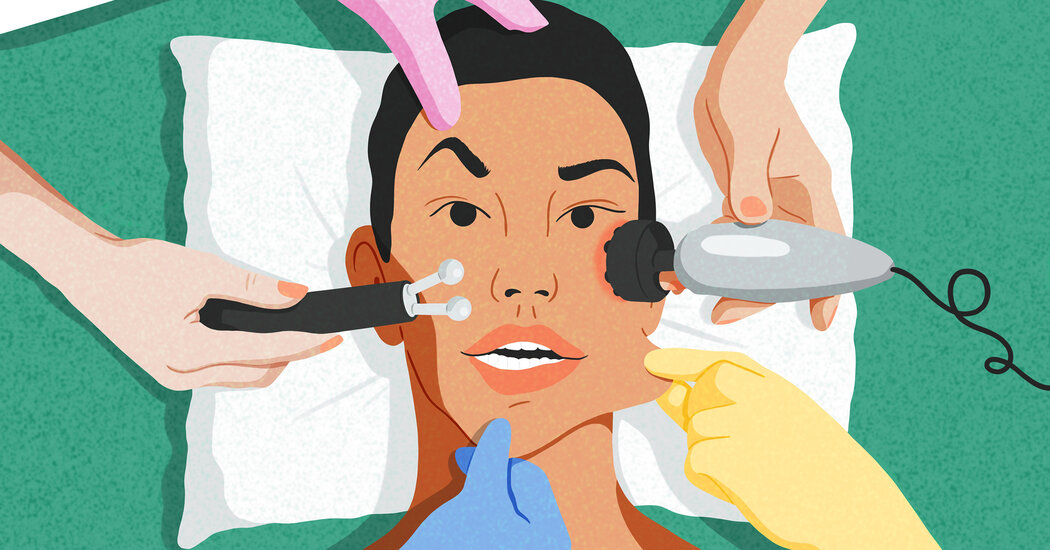Vulvodynia is a chronic painful condition affecting the vulva. (Shutterstock file)
While vulvodynia can occur at any age, it most commonly develops in women between the ages of 18 and 25 or after menopause. The constant discomfort can severely impact a woman's quality of life, relationships, and mental health.
Sex may permeate our popular culture, but conversations on the topic are still associated with stigma and shame in Indian households. As a result, most people facing sexual health issues or trying to find information about sex often turn to unverified online sources or follow unscientific advice from their friends. To address the widespread misinformation about sex, News18.com publishes this weekly column on sex titled “Let’s Talk About Sex.” We hope to start conversations about sex through this column and address sexual health issues with scientific perspective and nuances.
In this article, we'll discuss what vulvodynia really is, its different types, and treatment options to help you find relief.
Vulvodynia is a common condition that affects many women, but is often misunderstood. Vulvodynia is a chronic pain condition that affects the vulva (the female external genital area). It involves persistent sensations of burning, stinging, or irritation around the vaginal opening that can make sexual intercourse, inserting tampons, or even sitting extremely painful or uncomfortable. This condition is surprisingly common—it affects 16 percent of women at some point in their lives. While vulvodynia can occur at any age, it most often develops in women between the ages of 18 and 25 or after menopause. The constant discomfort can severely impact a woman's quality of life, relationships, and mental health.
There are two main types of vulvodynia:
- Localized vulvodynia: This type of vulvar pain is limited to one area or spot. The most common form is vestibulodynia or vestibulitis, in which pain is felt around the vaginal opening (vestibule). Other localized types include clitorodynia (pain in the clitoris) and Bartholin gland pain.
- Generalized vulvodynia: In this form, the pain spreads throughout the vulvar area rather than being limited to a single spot. It can affect the labia, vestibule, clitoris, and even the perineum (the area between the vagina and anus). Burning, irritation, or throbbing may be worsened by pressure from sitting, tight clothing, or sexual intercourse. It is often classified as provoked (pain triggered by touch or pressure) or unprovoked/spontaneous (constant pain with no obvious trigger).
Vulvodynia symptoms: what to look out for
- Stabbing or burning pain: The most common symptom of vulvodynia is a persistent stabbing or burning pain in the vulva area. This pain can range from mild discomfort to intense, excruciating agony. It may be made worse by certain activities, such as sitting for long periods, exercising, wearing tight clothing, or having sex.
- Pain or irritation: Many women with vulvodynia describe a feeling of pain, irritation, or roughness in the vulva, almost as if the skin is scraped or abraded. This irritated feeling is often worse after any friction or pressure on the area.
- Entry pain: In some women, the pain of vulvodynia occurs specifically at the vaginal entrance during attempts at penetration, such as inserting a tampon or having sex. This localized discomfort, known as “entry pain,” can make intimacy extremely difficult and distressing.
- Other potential symptoms: In addition to the pain itself, vulvodynia can cause muscle spasms or general stiffness and tension in the pelvic floor. You may also experience burning when urinating or notice abnormal discharge.
Possible causes of the development of vulvodynia
Vulvodynia can develop from a variety of causes. The specific cause is often difficult to determine and may involve multiple overlapping factors. Some possible causes and risk factors include:
- Injury or trauma to the vulvar area due to events such as childbirth, surgery, chemotherapy treatment, or recurrent vaginal infections.
- Genetic factors that make some women more predisposed to developing the disease.
- Hormonal changes or imbalances during periods, pregnancy, or menopause.
- Increased nerve irritation or tension of the pelvic muscles in the vulvar region.
- Inflammatory conditions affecting the vulvar skin such as lichen sclerosus or lichen planus.
Who is at risk for vaginal pain?
Certain groups of women are at higher risk of developing vulvodynia. These include:
- Women aged 18 to 25 and those in menopause.
- Women with a history of chronic fungal infections or vulvovaginal candidiasis.
- Those who underwent certain cancer treatments that affected the pelvic region.
- Women who have suffered vulvar injuries during childbirth or other trauma.
Diagnosis and treatment options for vulvodynia
Getting an accurate diagnosis is critical to managing vulvodynia effectively. Your gynecologist will likely start by ruling out other possible causes of your vaginal pain, such as infections or skin conditions. He or she may use a cotton swab test to identify areas of pain and look for abnormalities. There is no one treatment for vulvodynia, as the condition can be due to different underlying causes. However, some common treatment approaches include:
- Medication: Low-dose antidepressants, anticonvulsants, or topical anesthetics may help reduce pain signaling.
- Physical therapy: Pelvic floor exercises and massage can relax tight muscles that contribute to vulvar pain.
- Lifestyle changes – avoiding irritants, using lubricants during sex, and managing stress can provide relief.
It may take some trial and error to find the right combination of treatments. Be patient and work closely with your doctor to manage your symptoms.
Living with vulvodynia: self-care tips and coping strategies
- Manage stress and anxiety: Living with chronic vaginal pain can be incredibly stressful and anxiety-provoking. Finding healthy ways to manage stress and anxiety is critical to your overall well-being. Practices like meditation, deep breathing exercises, yoga, or talking to a therapist can help you cope better.
- Try pelvic floor physical therapy: Pelvic floor physical therapy can be helpful for some women with vulvodynia. A pelvic floor physical therapist can guide you through exercises and techniques to relax and strengthen your pelvic floor muscles. This can reduce the tension and spasms that contribute to vulvar pain.
- Explore alternative remedies: While evidence is limited, some women find relief through alternative remedies such as acupuncture, herbal supplements, or topical applications. Be sure to discuss any complementary therapies with your doctor first to ensure they are safe for you.
- Create a support system: Don’t go through this alone. Surround yourself with supportive loved ones who offer empathy and encouragement.
- Take care of your health: Taking care of your physical and mental health through self-care practices is essential. Prioritize stress relief, gentle exercise, a nutritious diet, and getting enough sleep. Be patient, kind, and compassionate with yourself along this path.
Ultimately, vulvodynia is no joke, but you don’t have to suffer in silence. Be your own health advocate and find a doctor who will truly listen to you. Try different treatments until you find relief. And remember, you’re not alone—millions of women suffer from vaginal pain. With patience and perseverance, you can get your routine back. Stay positive, take care of yourself, and don’t give up!













